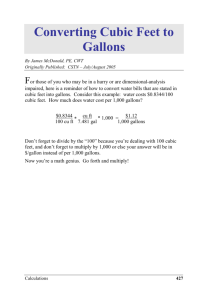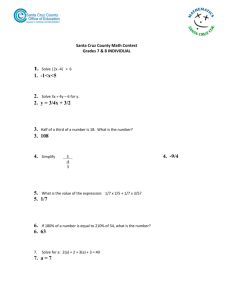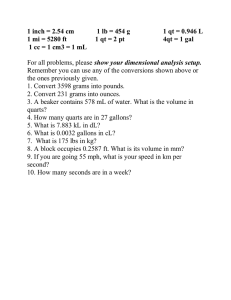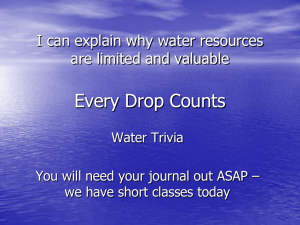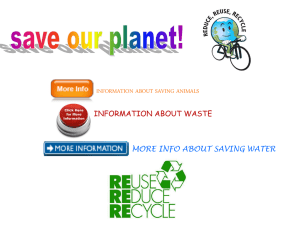Build Science Reasoning Skills Cost
advertisement
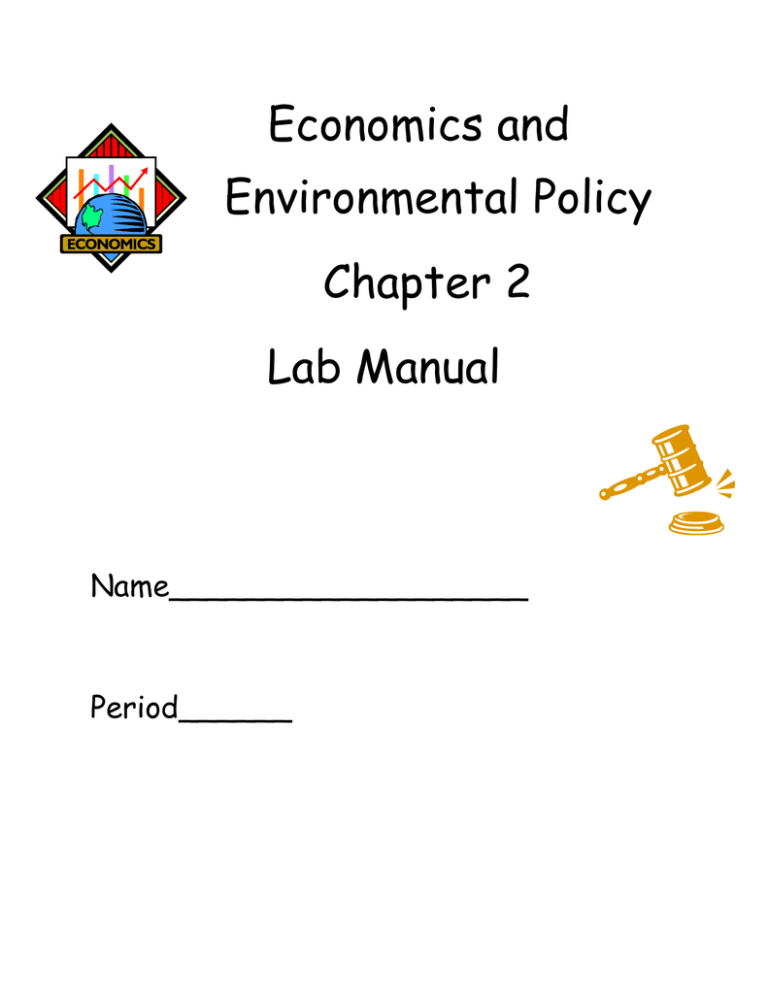
Economics and Environmental Policy Chapter 2 Lab Manual Name___________________ Period______ Directions: Read the categories below and then read the Case Study. As you read, fill in the table. You must have at least term in the vocabulary box and a clear thought/explanation in each of the other boxes. CLEANING THE TIDES OF SAN DIEGO AND TIJUANA PAGE 35 ! SEEMS IMPORTANT TO ME ? SOMETHING I DON’T UNDERSTAND X SOMETHING I DON’T AGREE WITH # WORDS/TERMS THAT SEEM IMPORTANT SOMETHING ELSE I WANT TO TALK ABOUT WHAT’S IN MY HEAD ALREADY ABOUT ENVIRONMENTAL LAWS? ENVIRONMENTAL ISSUES AND HUMAN IMPACT DIRECTIONS: 1. Watch the Core Science Series Video on Environmental Issues and Human Impact. Fill in the organizer with the environmental issues mentioned and their impact on humans. 2. Use the internet and text sources to research laws and policies set forth to address the environmental issue and the human health impacts related to the issue. ENVIRONMENTAL ISSUE (PROBLEM) MINING INCREASING POPULATION LANDFILLS TOURISM AIR POLLUTION HUMAN IMPACT (PROBLEM) LAW OR POLICY TO ADDRESS IT (SOLUTION) ENVIRONMENTAL ISSUE (PROBLEM) HUMAN IMPACT (PROBLEM) LAW OR POLICY TO ADDRESS IT (SOLUTION) WATER POLLUTION AGRICULTURE DEFORESTATION SPECIES LOSS CLIMATE CHANGE GREENHOUSE EFFECT MAIN IDEA (consider environmental justice, ethics, cultural view, world views, etc.) ___________________________________________________________________________________________________________________________________ ___________________________________________________________________________________________________________________________________ ___________________________________________________________________________________________________________________________________ ___________________________________________________________________________________________________________________________________ ___________________________________________________________________________________________________________________________________ FIND SOMEONE WHO CAN TELL YOU: Write the answer and the student’s name What EPA stands for What the Pennsylvania environmental agency is called A Pennsylvania law that protects threatened and endangered species A federal law that protects threatened and endangered species The law known as the farm bill An amendment to the Clean Water Act The name of the Act that is commonly known as “Superfund” Considered one of the most important environmental laws—requires any federal agency to consider environmental impacts of their actions Regulates air emissions from a number of sources in the USA ENVIRONMENTAL NON-MARKET VALUES “Money isn't everything...but it ranks right up there with oxygen.” ― Rita Davenport DEFINE NON-MARKET VALUE _____________________________________________________________________________________ _____________________________________________________________________________________ DIRECTIONS: USE YOUR VOCABULARY LIST TO DEFINE IN EACH TERM (IN YOUR OWN WORDS) AND SKETCH A PICTURE OF WHAT THE WORD MEANS. TERM AESTHETIC VALUE CULTURAL VALUE EDUCATIONAL VALUE EXISTENCE VALUE OPTION VALUE SCIENTIFIC VALUE USE VALUE DEFINITION (IN YOUR OWN WORDS) SKETCH AND LABEL AN EXAMPLE ENVIRONMENTAL COST/BENEFIT ANALYSIS SCENARIO: Maria finishes a jar of peanut butter while making a sandwich. She starts to rinse out the jar so that she can throw it in the recycling bin. But the remaining peanut butter is quite stuck to the inside of the jar. AS more and more water flows down the drain, she thinks, “I know that recycling is important, but so is water conservation. At what point should I just throw this jar in the trash?” VOCABULARY PREVIEW: ECONOMICS—the student of how resources are converted into goods (materials/products) and services (work that someone does) and how they are distributed and used. o Supply—amount of a product for sale at a given price o Demand—amount of a product people will buy at a given price o Cost/benefit analysis—compare what is sacrificed and gained by a specific action If the cost outweighs benefits, idea is usually abandoned If benefits outweigh costs, idea is usually pursued Build Science Reasoning Skills Cost-Benefit Analysis No environmental policy is perfect. All policies have costs as well as benefits. When considering the implementation of a policy, the costs and benefits must be carefully considered. 1. Infer Fill in Data Table 1 with costs and benefits of continuing to clean out the peanut butter jar vs. just throwing it away. Data Table 1. Policy Costs and Benefits Costs Benefits 2. Evaluate Based on your analysis of costs and benefits, do you think that a peanut butter jar should be cleaned out and recycled or just thrown away. Defend your answer. __________________________________________________________ __________________________________________________________ __________________________________________________________ __________________________________________________________ __________________________________________________________ __________________________________________________________ 3. EXPLAIN: How is Maria’s decision similar to the cost-benefit analysis that a company might perform when decided to develop a new product or purchase new equipment. __________________________________________________________ __________________________________________________________ __________________________________________________________ __________________________________________________________ __________________________________________________________ 4. POSE QUESTIONS: Maria decides to research her question. List three questions that Maria should try to answer as she does her research. __________________________________________________________ __________________________________________________________ __________________________________________________________ __________________________________________________________ __________________________________________________________ 5. Extend: Make a list of other common situations in your life where a cost/benefit analysis could help you make a more informed decision. Daily Water Use The United States used about 349 billion gallons of fresh water per day in 2005. The water use in each of four categories is shown below as a percentage of total water use. In this activity, you will calculate the billion gallons of water these percentages represent. You also will calculate the average amount of fresh water used per person per day for each category To find how much water is used in each category, first write the percentage as a decimal. Then, multiply the decimal by the total amount of water used. The calculation for the gallons of fresh water used per day in the electricity category is modeled at the right: 41% = 41 = 0.41 100 water used = decimal × total amount used billion gallons = 0.41 × 349 = 143.09 billion gallons 1. Calculate the gallons of water used per day for each of the other three categories shown in the table above. Write your answers in the table. To find the average amount of fresh water used per person per day, divide each amount by the population. In 2005, the U.S. population was 301 million (0.301 billion). The calculation for the average amount of water used water used per person per day = amount used = 143.09 billion gallons population 0.301 billion people 475.38 gallons per person 2. Calculate the average daily water use per person for each of the other three categories shown in the table. Write your answers on the table. per person per day for electricity is



